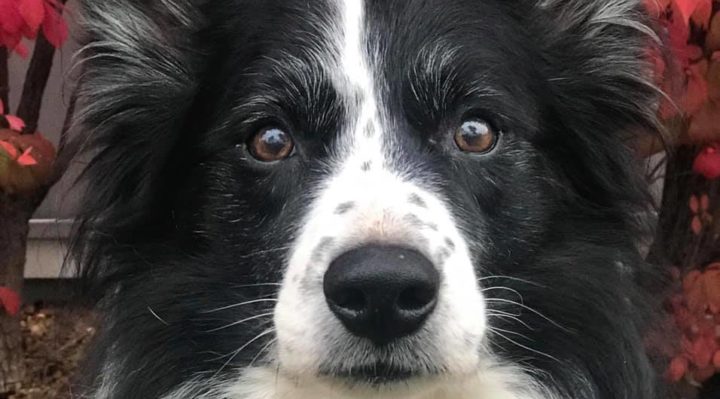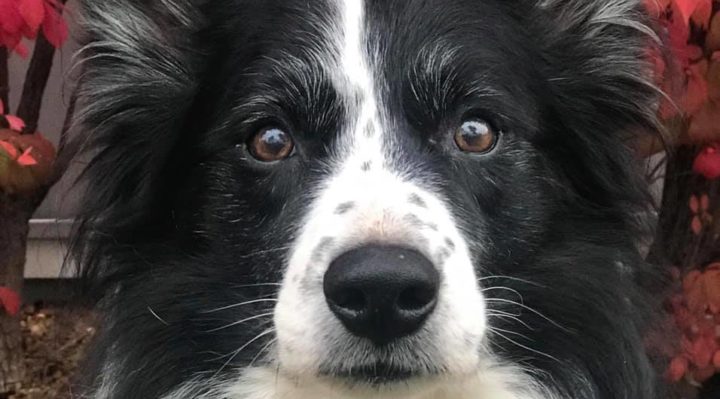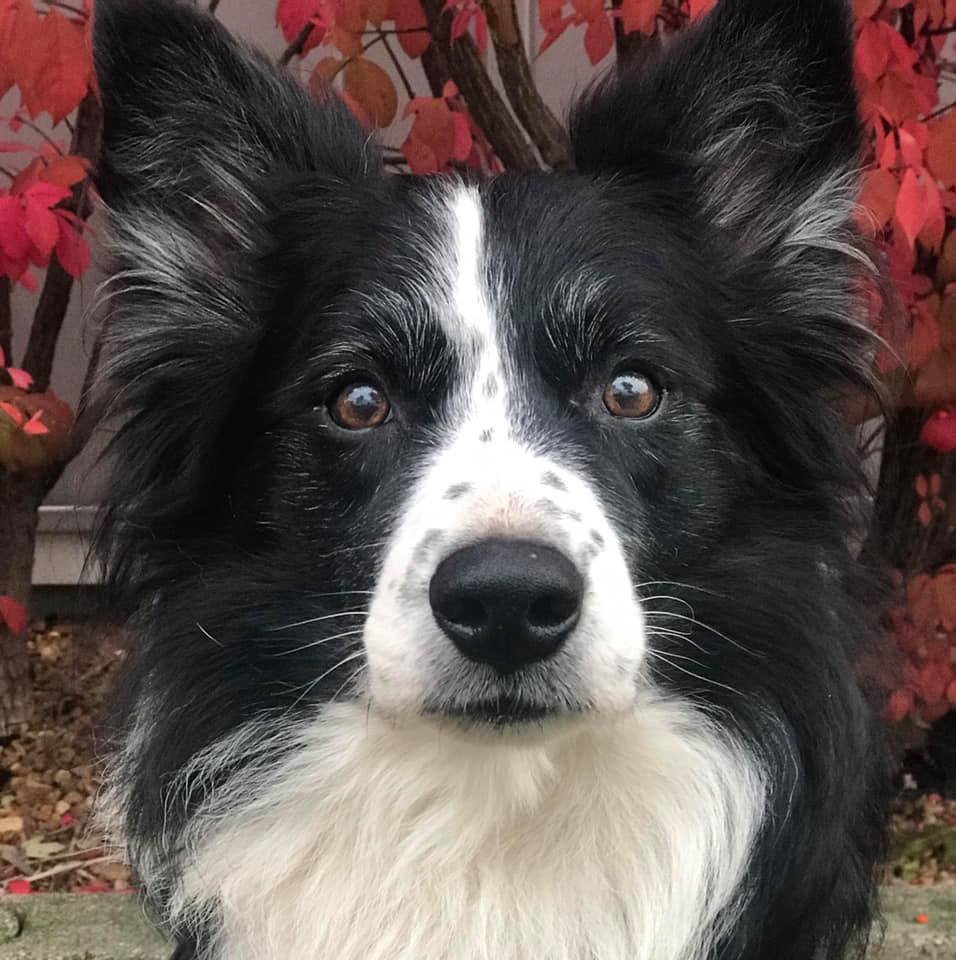

We all hope our dogs will grow old and remain healthy and happy all their lives.
Sadly, not all dogs can do both.
When I talk about teaching young dogs skills to make their old age easier, I am addressing the “happiness” part of their lives—the aspect that we, as their primary caregivers, affect most. We provide them with housing, nutrition, education, exercise. We meet their mental and physical needs. We offer them bonded companionship and love. We are our dogs’ family.
We know they might not be healthy forever.
We don’t know if they can be happy forever.
We can try hard to make that happen, though, by working closely with our veterinarians and other pet professionals to keep our pets in good health, to treat them effectively when they are not healthy, and to do due-diligence on decisions about our dogs’ physical well-being.
Preparing our dogs from the first day we meet them to face their eventual old age with confidence is also a very good start. This series of articles—about teaching young dogs skills that can make their old age easier—outlines some basic areas of education for your puppy or young dog.
Your best bet for hands-on guidance in these lessons is a local class taught by an experienced and ethical trainer whose methods are entirely force-free.

Photo by Danielle Davis — Devlin, six weeks old
Physical disabilities that are age-related vary from dog to dog. You can predict that a general class of dogs is prone to, say, dental issues (like my tiny terrier mix) and you can work from day one to prevent dental problems . . . but nothing guarantees that your tiny terrier mix will never need an extraction. When you know the odds of a bad thing occurring for your dog, you act to prevent the bad thing anyway, because that makes sense.
The same is true for sight and hearing. You can’t know if your dog will eventually be affected by the lessening or loss of either or both of those senses, but you can do everything possible to prepare the dog to cope should their sight or hearing ever start to go. In my experience, the older the dog, the more likely their sight or hearing will slowly slip away. In fact, owners often report that it’s probably been happening for months or years, but they only recently noticed the extent of their older dog’s disability.
Sight
Many causes of sight issues are not age-related. For one reason or another, even young dogs can lose some or all eyesight in one or both eyes. When it happens suddenly, there is of course a period of adjustment, with some possibly serious challenges at first. When it happens slowly, the dog often has time to adjust through a process of trial and error, “training” himself to stay safe in his home environment.
With aging dogs, that adjustment process can be eased by a lifetime of experience, or complicated by the effect of an also-aging brain. It would be great if those two factors cancelled each other out, but that’s not something we can guarantee. We can hope, but we can’t know.
Hearing
Hearing loss in dogs of any age can often be mistaken for disobedience. Many times, though, it’s not that the dog is choosing to ignore you, it’s that the dog has not heard you.
It’s highly unlikely that a dog with a reliable recall—a dog who always comes when he’s called, immediately and fast—is choosing to change a behavior that’s been so rewarding to him. (You know it was rewarding because he continued to do it.)
Check for extenuating circumstances the first few times it happens. Was there a squirrel distracting his attention? Was she stuck in a room with a door closed?
When you find repeatedly that no, the dog was sleeping, the dog was sitting in another room, the dog was standing by the front door . . . when you realize that the dog did not choose to ignore your verbal cue, the dog simply did not hear you . . . that’s the time to switch to non-verbal cues.

Photo by Danielle Davis — Devlin, twelve-and-a-half years old
What can you teach your young dog that will make his life easier if he loses sight or hearing as he ages?
Since you don’t know and usually can’t predict what health issues any particular dog will have in her senior years, you can best prepare by teaching a variety of behaviors and cues now, then routinely practicing those behaviors over the years so that they can be used when needed.
Start building your dog’s repertoire in puppy or beginning pet classes. Go back to school often for refreshers and new skills. Ask friends and family members for help when you’re training so they, too, learn to interact appropriately with your dog and can care for her in the future if necessary.
Hand Signals
▪ Teach hand signals with (or even before) verbal cues.
▪ Make big gestures that can be seen from a distance.
▪ Practice without the dog in front of a full-length mirror.
▪ Test signals on other humans and get their feedback.
Observe experienced handlers working dogs in sports or activities that require signaling dogs at a distance. You will see that “hand” signals are really “arm” signals, with the moving parts as far away from the body as possible, out to one side or the other, often crossing the body diagonally.
When you stand at a distance from another human, test out what you can see most easily and what disappears from view. Choose the movements you feel will be most visible to a dog at a distance. That same motion may well turn out to be most visible to a dog whose eyesight is less than normal.
Recall Probably the most important hand signal to teach to any dog is the recall cue—to come when called, immediately and fast. Teach that cue at increasing distances as your dog succeeds in responding to it up close. That signal should have the power to bring your dog to you, fast, from as far away as the dog can see it, even if the dog’s ability to see is diminished with age.
Release Another signal or cue that will come in handy should your dog lose his ability to hear is a “release” cue, to indicate “exercise over” or “you’re done now”—a way you tell your dog who’s on a Stay that the Stay is finished and he is free to move from that position. Your senior dog may no longer hear your verbal release well (or at all), and may not be able to see a very small gesture. So make it big!
Other Methods
Other methods to get your dog’s attention when his sight or hearing is diminished include some tricks from trainers who work with deaf and hearing-impaired dogs. These cues can be learned at any time during your dog’s life—the sooner the better!
I use stomping on the hardwood floor to get my tiny terrier’s attention now that she’s losing her hearing. She can’t hear it, but she can feel it. What she feels through her feet and body tells her the direction of the stomper (me). Once she’s looking at me, I can give her a great big hand signal that indicates she should come to me. It works!
Another easy trick to teach your young dog is the bean bag as an attention-getter.
▪ Learn to toss a small bean bag accurately. (Do that without the dog!)
▪ Once you add the dog, toss the bean bag to land as near the dog as possible without touching. Ideally, the bean bag lands directly in front or right at the side of the dog.
▪ The bean bag is the cue for the dog to turn to locate you. When the dog is looking at you, give your recall cue, whatever that may be.
Remember, not all dogs with hearing loss hear—or don’t hear—the same sounds. For some dogs, a high-pitched whistle is heard easily even when they’re no longer able to hear the sound of your loudest voice. Teach a whistle recall when your dog is young, and you’re set for calling him even if you have laryngitis or can’t move your arms! Try various whistles until you find one to which he responds.
I’ve also used a high-powered flashlight to signal dogs in a variety of circumstances. In my yard, for instance, older dogs whose sight may be fading and who can’t hear well are often confused about finding their way back to the house or human in the dark of night. I locate them with a flashlight beam, then use the beam to guide them to my back steps and entry to the house, keeping the beam shining just slightly ahead of their front paws. I’ve taught several older dogs this trick in the last few years. It helps!
With these suggestions of skills to help your dog should she lose sight or hearing as she ages, keep in mind that we are not talking about dogs who are deaf or blind from birth.
If you choose to commit to raising a deaf or blind dog, you will need a great deal of background information and education, plus the professional help of a trainer with expertise in deaf or blind dogs (which is not something all trainers have, of course). Before you make the commitment to raise a deaf or blind puppy, make sure your support system is fully in place, starting with your veterinarian.
There’s no guarantee that any particular cue or behavior you teach your dog while he is young will be of use when he gets older. We don’t sign kids up for music lessons because we know they’ll become maestros when they’re older. We sign kids up for music lessons because they might become maestros when they’re older. Or, more likely, because they’ll learn to love music when they’re young and that will bring them happiness for the rest of their lives.
We don’t sign our puppies or young dogs up for training classes knowing that when they’re older, they’ll win national competitions or save human lives. That may happen, but all we know going in is that our dogs, educated, will likely live better lives . . . that our dogs, educated, have a much better chance of living happier lives.



